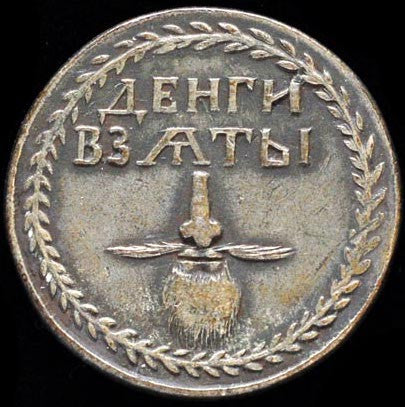America's national museum, the Smithsonian, contains the world's greatest collections of many things, and you would expect them to impress with their American coin collection. But few people may know that it has one of the two greatest Russian coin collections in existence.
Boasting 14,000 coins, some of which date back a full millennium, the Smithsonian's collection is rivalled only by the Hermitage Museum in St. Petersburg, Russia. How did it reach the USA?
The coin collection began with the numismatist Russian Grand Duke Georgii Mikhailovich, who was appointed director of the then new Alexander III Museum in 1895. Following his interests and expertise, Mikhailovich spent much of his time enhancing the museum's coin collection.
Mikhailovich became concerned about the collection's safety during the First World War, and had it packed away in five crates. This proved to be prudent as Russia was turned upside-down at the end of the war with revolutions resulting in Bolshevik rule.
Mikhailovich himself was shot, as a close relative of the ruling family (he was Tsar Alexander II's nephew), but the bulk of the collection was spirited out of Russia to Yugoslavia, where in an extraordinary court case his wife, Grand Duchess Maria Georgievna fought to own it against the Bolsheviks. She won.
 A piece of history - the 1710 Russian denga coin |
The Grand Duchess planned an auction in Switzerland, but war intervened once more and the October 1939 sale was cancelled. In fact Georgievna did not live to see it sold, and instead it passed to her daughters.
Many of the gold and platinum coins in the collection were finally sold by Christie's in 1950, but as one of the Grand Duchess' daughters married an American the silver and copper coins made their way across the seas to the USA.
She was still interested in looking for a way to sell on the remaining coins, and so a New York coin dealer named Sol Kaplan contacted Willis du Pont of the famous and wealthy du Pont family (a later member John du Pont was famous as a stamp collector amongst other things).
Kaplan suggested that du Pont could buy the collection such as it was and donate it to the Smithsonian. Du Pont not only agreed, but made moves to chase down some of the gold and platinum coins which had already been sold too.
 No hairline cracks... the Peter the Great beard token |
The collection offers some particularly fascinating pieces from the early 18th century, including some of the first roubles. The word 'rouble' relates to a chopping action, and was used to denote a standard width of silver sliced off a bar, and stamped on both sides, one with eagles and the other side the Tsar on a horse.
Other highlights include a 1704 ruble struck over a British crown and a 1710 copper denga. Most remarkable for those unfamiliar with them, however, will be the beard tokens.
Beard tokens relate to the laws instituted in 1705 by Peter the Great which attempted to press nobles and commoners alike into shaving as part of his modernisation efforts.
Nobles were given silver tokens as receipts if they had paid the heavy tax required, whilst commoners were given copper ones in return for far modest payments.
Though it's a relatively small part of the Smithsonian's overall collection of coins and similar objects, which number 1.6 million, the Grand Duke Georgii Mikhailovich's collection is fascinating and tells much of the history of Russia. It is well worth looking out for.
Collectors interested in coins of this period will want to take a look at this British coin from the reign of William III which we currently have for sale.






